Parc de l'indépendance Seodaemun (서대문독립공원)
11.3Km 2022-12-15
251, Tongil-ro, Seodaemun-gu, Seoul
+82-2-3140-8305
Le parc de l'indépendance fut un lieu de détention de nombreux prisonniers politiques en Corée durant les mouvements d'indépendance pour le pays jusqu'au 15 août 1945 mais aussi durant les bouleversements politiques en Corée jusque dans les années 1960. Les sept zone de détention, la zone des exécutions, et la prison pour femme au sous-sol ont été entièrement restaurés après le transfert du centre de détention de Séoul dans la ville de Uiwang. Au sein du parc Tapgol, une sculpture commémorative a été installée en commémoration du soulèvement du 1er mars. La porte Yeongeunmun a été intégré au parc le 15 août 1992.
Samcheongdong Sujebi (삼청동수제비)
11.3Km 2019-06-13
101-1, Samcheong-ro, Jongno-gu, Seoul
+82-2-735-2965
Get off the subway at Gyeongbokgung Station (Subway Line 3), follow the wall of the Gyeongbokgung Palace and you'll find yourself facing a street with majestic trees whose foliage changes every season. This street leads directly to Samcheong-dong. As you enter Samcheong-dong and walk towards the Samchong-dong Tunnel, you'll come across Samcheongdong Sujebi, located right next to the Prime Minister Legation.
Samcheongdong Sujebi became a hit among Japanese tourists, after being featured in a popular Japanese magazine. The main dish here is, of course, sujebi (a traditional Korean soup consisting of chunks of dough and various vegetables). It comes in a pot full of sliced pumpkin, clams, and potatoes. This delicious soup is so tasty that there's almost always people lined up outside the restaurant. Other popular items include dongdongju (traditional Korean liquor) and gamjajeon (a Korean potato pancake that uses only potato starch and no other ingredients).
Nuwa [Korea Quality] / 누와 [한국관광 품질인증/Korea Quality]
11.3Km 2021-03-29
3-1, Pirundae-ro 5na-gil, Jongno-gu, Seoul
This hanok (traditional Korean house) is located deep in the Seochon Village, west of Seoul’s Gyeongbokgung Palace. Its tasteful renovation of a small 33 m2 hanok made it highly popular among the younger guests. The courtyard has a low maple tree and tastefully arranged stones, while the hanok is capable of accommodating up to 2 persons.
This L-shaped hanok has a full window wall facing the living room, which is furnished with a low walnut table and a bathtub. Visitors can enjoy premium tea at the table. The bathtub, which is connected to the table at one end, can be used mainly for a foot bath with bath salts that assist circulation. There is also a restroom in the building.
Nuwa’s bedroom has a circular window, much like the full moon, with a view of the garden and the fringes of the Inwangsan Mountain.
Hanok Guesthouse Dongchonchae [Korea Quality] / 한옥 게스트하우스 동촌재 [한국관광 품질인증/Korea Quality]
11.4Km 2021-03-26
21-10, Jahamun-ro 11-gil, Jongno-gu, Seoul
Built in 1939, Dongchonchae was designated as Seoul Well Hanok by the Seoul Metropolitan City in 2016. In 2020, this hanok (traditional Korean house) received the Certificate of KOREA QUALITY from the Korea Tourism Organization in the Heritage Hanok field in recognition of its historicity and quality of services. Dongchonjae is located in the western side of Gyeongbokgung Palace, at Seochon. When one passes through its main gate, one sees the yard, with anchae (women's quarters), sarangchae (men's quarters), and byeolchae (detached quarters) surrounding the plot. Anchae has four rooms, daecheong (wood-floored main hall), a kitchen, and a restroom. One of the rooms is used for tea ceremonies as well. Outside of the sarangchae and byeolchae, which are the living spaces for the owners, visitors have free access to the numaru (raised open floor) and the yard. The anchae’s rooms “Bom” and “Yeoreum” can accommodate 2 to 3 adults each, while the rooms “Gaeul” (Tea Room) and “Gyeoul” are optimal for two. The building is rented out as a whole, so no more than one group may stay in the building at any given time. Standard occupancy is four persons, and eight is the maximum number. There are two restrooms, one within the anchae building, one out in the backyard.
Cooking is not allowed in the kitchen, but guests are free to bring in outside food. Experience programs on offer include nighttime exploration of Seoul City Wall, tea ceremony, folk songs, and rice cake making. Additional payment is only required for rice cake making. Guests may choose between two types of complimentary breakfast: Korean, which comes with rice, soup, and three side dishes; and Western, which comes with bread, salad, and coffee. There are a 100-in screen and mini projector for film watching in the yard or daecheong. Towels, toiletries, hair dryer, bottled water, traditional tea, and capsule coffee are included. The kitchen is equipped with kitchen utensils, a microwave, and a coffee pot, enough for instant foods. Guests also have access to refrigerator and washing machine
CAFÉ TERRACE (카페테라스)
11.4Km 2021-03-26
102-2, Samcheong-ro, Jongno-gu, Seoul
+82-2-723-8250
It is a café that serves delicious waffles. This cafe is located in Jongno-gu, Seoul. The representative menu is waffle.
Mémorial national du gouvernement provisoire de la République de Corée (국립대한민국임시정부기념관)
11.4Km 2023-01-16
279-24, Tongil-ro, Seodaemun-gu, Séoul
Le Mémorial national du gouvernement provisoire de la République de Corée a été créé dans le but de mettre en lumière le désir d'indépendance du gouvernement provisoire de la République de Corée et de transmettre ces valeurs aux générations futures. Le lieu est constitué d'un terrain de 3 656 ㎡, d'un bâtiment de 9 703 ㎡ et de salles d'exposition de 2 240 ㎡. L'immeuble composé de quatre étages en surface et de trois étages en sous-sol comprend trois salles d'exposition permanentes, une salle d'exposition spéciale, des archives, une « place des symboles », une salle polyvalente et un jardin sur le toit.
L'exposition permanente se concentre sur le Mouvement du 1er mars qui a permis d'établir le gouvernement provisoire de la République de Corée mais aussi sur la formation du gouvernement coréen qui a succédé juridiquement au gouvernement provisoire. Dans la salle d'exposition qui se trouve au 1er étage, une exposition intitulée le « Retour du gouvernement provisoire de la République de Corée » accueille les visiteurs. Par ailleurs, une œuvre d'art mural symbolique dont le titre est la « Vague de l'histoire », est installée sur l'esplanade extérieure. Cette œuvre représente la volonté du gouvernement provisoire d'obtenir l'indépendance ainsi que le dynamisme de la Corée d'autrefois, actuelle et du futur.
Visite nocturne du palais Gyeongbokgung (경복궁 야간 특별관람)
11.4Km 2022-03-28
Seoul, Jongno-gu, Sajik-ro 161
02-3700-3900~3901
Musée du Vieux Parfum de Bukchon (북촌생활사박물관)
11.4Km 2021-03-27
90, Bukchon-ro 5na-gil, Jongno-gu, Seoul-si
+82-2-736-3957
Le Musée du quotidien de Bukchon expose des objets ayant été colléctés à Bukchon, village historique autrefois réservé à la noblesse. Pendant des centaines d’années, de vrais trésors dans chaque résidence furent légués de générations en générations mais depuis le développement rapide de la Corée, dans la seconde moitié du 20ème siècle, certains sont devenus obsolètes. Ouvert en 2003, le musée cherche à préserver des artéfacts en les présentant dans un environnement intime et accueillant où vous pouvez découvrir comment ils étaient utilisés au quotidien.
Les groupes de 10-15 personnes peuvent participer à des programmes leur permettant de fabriquer des objets traditionnels ou à des programmes pour prendre part à la réalisation de ssukgaetteok (gâteau de riz à base d’armoise).
Près du musée se trouvent de nombreuses attractions : le Village Hanok de Bukchon, le Parc Samcheong, le Musée des Hiboux, le Musée ToyKino, Musée des Bijoux du Monde, et le Musée des Palais Nationaux de Corée sans oublier les palais royaux comme celui de Gyeongbokgung.
GOGHI (고희)
11.4Km 2021-03-26
17, Jahamun-ro 12-gil, Jongno-gu, Seoul
+82-2-734-4907
A good café to have a meal as it has a brunch menu as well as drinks. This cafe is located in Jongno-gu, Seoul. The representative menu is americano.
Café Moon (달 카페)
11.4Km 2019-12-23
94-1, Samcheong-ro, Jongno-gu, Seoul
+82-2-735-7355
Café Moon has a trendy interior design and includes a realistic 'moon' mounted on one of the walls. The inside and outside of the café are decorated with hanok designs, designs of traditional Korean houses. The inner courtyard of the grounds is often the stage for a variety of parties and music performances held throughout the year. From the late spring into fall, Café Moon holds musical performances of traditional instruments from around the world. The diners enjoying their meals next to the courtyard need only slide the windows open to let in the beautiful melodies.

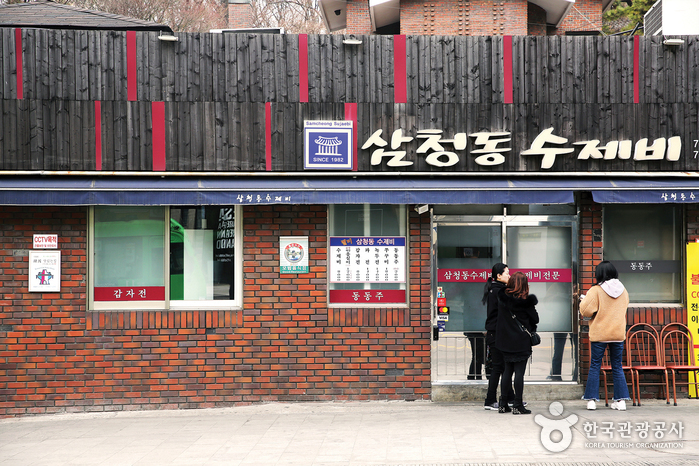
![Nuwa [Korea Quality] / 누와 [한국관광 품질인증/Korea Quality]](http://tong.visitkorea.or.kr/cms/resource/07/2707607_image2_1.jpg)
![Hanok Guesthouse Dongchonchae [Korea Quality] / 한옥 게스트하우스 동촌재 [한국관광 품질인증/Korea Quality]](http://tong.visitkorea.or.kr/cms/resource/96/2705896_image2_1.jpg)
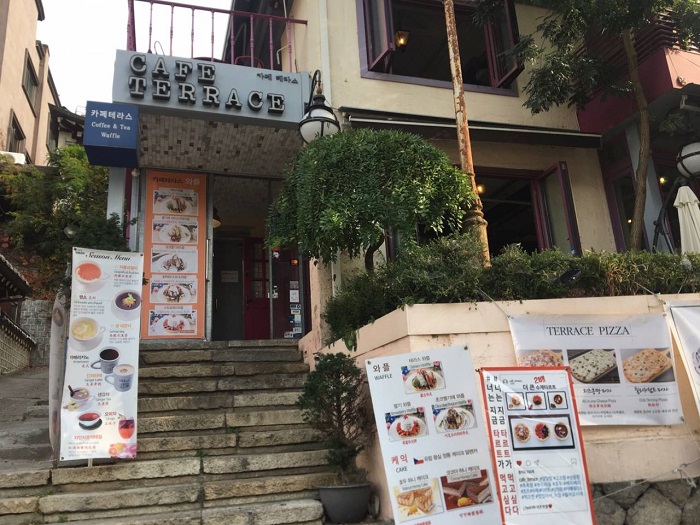
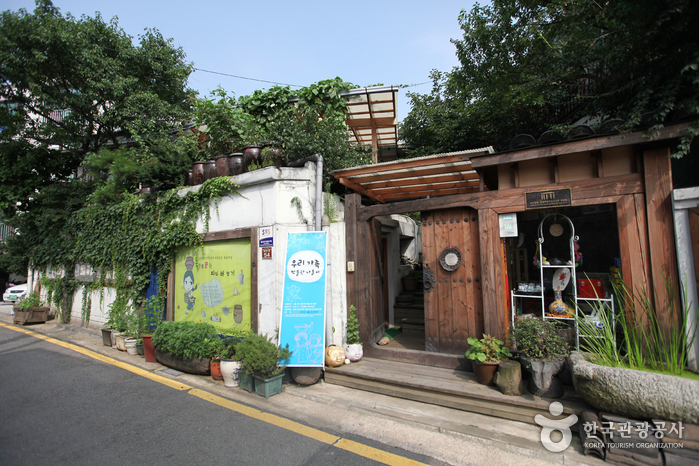
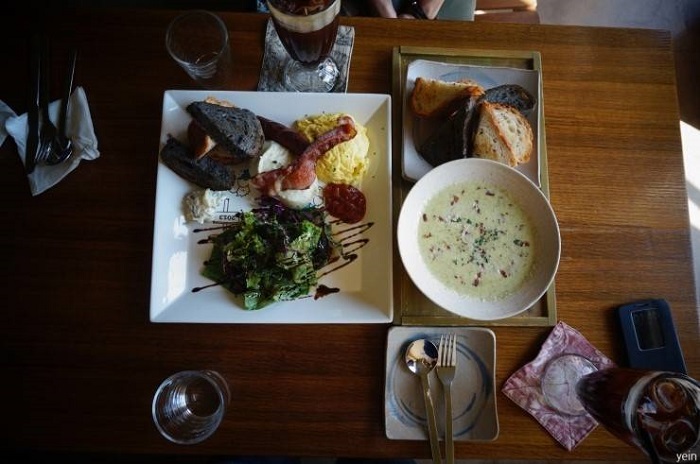
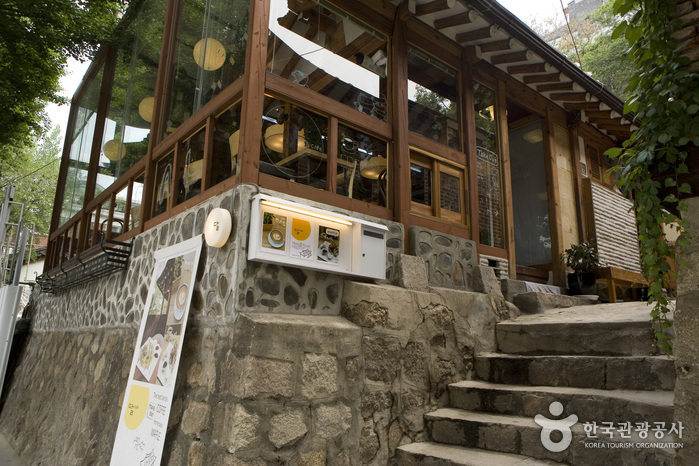
 Français
Français
 한국어
한국어 English
English 日本語
日本語 中文(简体)
中文(简体) Deutsch
Deutsch Español
Español Русский
Русский